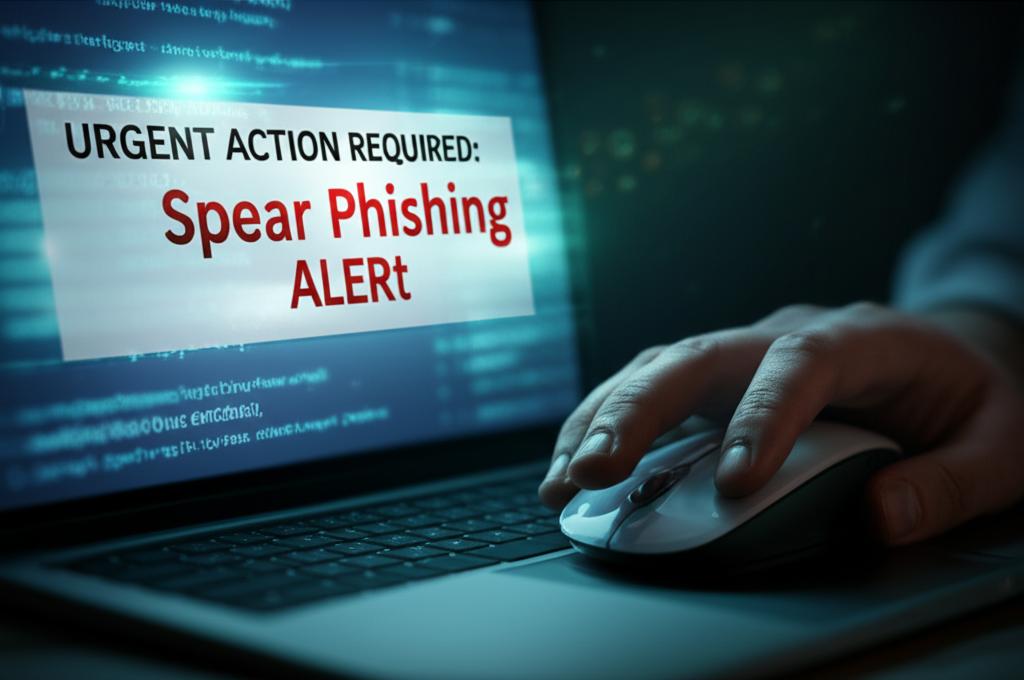Defend Against Devastating Spear Phishing Attacks: A Crucial Guide
What is Spear Phishing? A Targeted Cyber Threat Explained
In the evolving landscape of cyber security threats, spear phishing stands out as a particularly insidious and dangerous attack vector. Unlike broad, indiscriminate phishing campaigns that cast a wide net, spear phishing is a highly personalized and sophisticated attempt to trick specific individuals or organizations into divulging sensitive information, transferring funds, or executing malicious software. This targeted approach makes spear phishing significantly more effective and harder to detect than its more generic counterparts.
How Spear Phishing Works
Spear phishing attacks are meticulously crafted, leveraging detailed information about the target to create a believable and urgent scenario. Here’s a breakdown of the typical process:
- Reconnaissance: Attackers gather information about the target from public sources like social media (LinkedIn, Facebook), company websites, and news articles. They might learn about job roles, projects, recent company events, or even personal details.
- Personalization: This gathered information is used to craft an email or message that appears legitimate and relevant to the target. It often impersonates a trusted entity, such as a CEO, a colleague, a vendor, or a known service provider.
- Urgency or Authority: The message typically contains a call to action, often under the guise of urgency, authority, or a specific business need. Examples include urgent financial requests, password verification for a critical system, or a request to review a ‘confidential’ document.
- Malicious Payload: The ultimate goal is to get the victim to click a malicious link, open an infected attachment, or reply with sensitive information. This can lead to credential theft, malware infection, or financial fraud.
Why Spear Phishing is So Dangerous
The danger of spear phishing lies in its precision and ability to bypass standard security filters that might catch more obvious phishing attempts. Its highly personalized nature makes victims more likely to trust the communication, leading to:
- High Success Rates: Personalized attacks are significantly more successful than generic ones.
- Bypassing Traditional Defenses: Because the emails are often text-based and lack obvious red flags, they can often slip past email security gateways.
- Significant Damage: A successful spear phishing attack can lead to severe data breaches, substantial financial losses, intellectual property theft, and reputational damage.
Key Characteristics of Spear Phishing Attacks
Identifying a spear phishing attempt requires a keen eye for detail. Look for these common characteristics:
- Targeted Recipient: The email is clearly meant for you or a specific group, often referencing your role or recent activities.
- Personalized Content: The message contains specific details about you, your company, or your colleagues, making it seem authentic.
- Impersonation: The sender appears to be a known and trusted individual or organization (e.g., your CEO, HR, a bank).
- Urgency or Threat: There’s often a sense of immediate action required, or a warning of negative consequences if you don’t comply.
- Malicious Call to Action: The email asks you to click a link, open an attachment, or reply with confidential information.
- Subtle Anomalies: Slight misspellings in domain names, unusual grammar, or an inconsistent tone might be present.
Common Targets for Spear Phishing
While anyone can be a target, certain roles and individuals are frequently prioritized by attackers due to their access to valuable assets:
- Executives (Whaling): High-level executives are often targeted in ‘whaling’ attacks due to their authority and access to significant funds or highly sensitive information.
- Finance Department Personnel: These individuals are targeted for initiating fraudulent wire transfers or providing financial data.
- IT Administrators: Access to system credentials and network infrastructure makes them prime targets.
- HR Staff: They possess personal employee data, which can be valuable for further attacks or identity theft.
- Employees with Access to Sensitive Data: Anyone with access to customer databases, intellectual property, or confidential company secrets.
Protecting Against Spear Phishing Attacks
Combating spear phishing requires a multi-layered approach combining technology, policy, and human vigilance:
- Employee Training: Regular and comprehensive security awareness training is paramount. Educate staff on how to identify suspicious emails, verify sender identities, and report potential threats.
- Strong Email Security Filters: Implement advanced email gateway solutions that use AI and machine learning to detect anomalies, impersonation attempts, and malicious content.
- Multi-Factor Authentication (MFA): Enforce MFA across all critical systems to add an extra layer of security, even if credentials are compromised via spear phishing.
- DMARC, DKIM, SPF: Implement email authentication protocols to prevent domain spoofing and verify legitimate senders.
- Vigilance and Verification: Foster a culture where employees are encouraged to be skeptical. Always verify unusual requests for information or financial transactions through an independent channel (e.g., a phone call to a known number, not replying to the email).
- Incident Response Plan: Have a clear plan in place for what to do if a spear phishing attack is suspected or successful.
By understanding the nuances of spear phishing and implementing robust defense strategies, organizations can significantly reduce their risk exposure to these sophisticated and devastating cyber threats.







